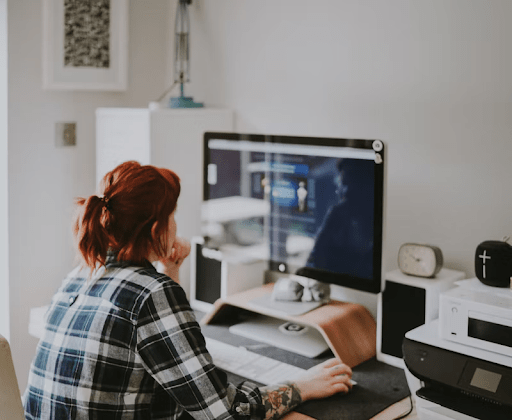Sitting is the New Smoking - Impact of Sedentary Lifestyle
*Disclaimer: This post contains affiliate links.
Written by Alex Payton. She is an undergraduate student at UNCW, and is a Public Health intern at Going Beyond the Pink.
It has been reported that about 1 in 4 American adults spend more than eight hours a day sitting and about 44% report doing no moderate to vigorous physical activity at all during the week. Currently the U.S. ranks 143 out of 168 countries in physical fitness. This partly has to do with sedentary jobs increasing by 83% since the year 1950. According to the American Heart Association, only 20% of the current workforce have physically active jobs. Unfortunately COVID-19 did not make these statistics much better, as many had to transition to fully remote school and work. From active to inactive, or what is also called sedentary, we are experiencing a decline in physical activity on a daily basis.
Defining a Sedentary Lifestyle
A lifestyle where there is little to no physical activity due to a lot of sitting and lying down on a regular basis. This is common in cancer patients and survivors who are facing overwhelming fear, which can be paralyzing at worst and distracting/demanding of their time at best, pain and fatigue from treatments, and more than normal demands on their time due to regular doctor visits. Many cancer patients and survivors need to spend a lot of time resting their bodies. Fatigue among cancer patients and survivors can be combated with mild to moderate exercise which is explained in further detail below.
Understanding how this Affects Our Bodies
With a sedentary lifestyle, your body is not able to burn calories which increases the risk of weight gain. Sitting and inactivity contributes to muscle loss which is compounded by treatment related muscle loss for breast cancer survivors given the side effects of treatment. Your bones can become weakened and lose mineral content. Our metabolism may be affected, causing nutrients to have trouble breaking down. Current cancer treatment may impact this as well given how it affects patients’ gut health - both leading to fewer nutrients being absorbed in the body. Poor blood circulation, increased inflammation, and hormonal imbalance are also major side effects of not incorporating regular physical movement. Increased or chronic inflammation can become a risk factor for cancer due to the damage caused to DNA. For example, those with chronic inflammatory bowel diseases such as Crohn disease, have an increased risk of colon cancer.
Potential Health Risks of Sedentary Lifestyle
A sedentary lifestyle may increase one’s risk of the following chronic diseases:
Certain cancers, including colon, breast, and uterine cancers, increased feelings of depression and anxiety, heart diseases, high blood pressure, high cholesterol, Type 2 diabetes, and obesity.
Worsens feelings of fatigue
Exercise and Why It’s Important
Exercise can improve your overall health and fitness while also reducing risks for chronic diseases. Benefits of exercising include “improved sleep quality, increased ability to perform everyday activities, improved cognitive ability, improved bone and musculoskeletal health” (Centers For Disease Control and Prevention, 2022). It is recommended for adults to get at least 150 minutes of moderate or 75 minutes of vigorous aerobic physical activity a week. Aerobic exercises include fast walking, jogging, swimming, biking, etc. Strength training is also suggested and includes lifting weights, exercise bands, sit-ups and pushups. Links to our Educational Hub regarding weight management and mental health can be found here: Weight Management and Exercise and Mindset and Mental Health
How to Incorporate Physical Activity While At Work and Home
Any type of household maintenance i.e. cleaning, gardening, yard work, and standing up while working are all great ways to include physical activity at home. Links to stand up desk options here: https://amzn.to/3AMjhOB, https://amzn.to/3aBtEdc. It is encouraged to move while watching TV by incorporating under desk exercise equipment such as: https://amzn.to/3uNSU72 or https://amzn.to/3APYLg6. Yoga or gentle stretching are also great to include! Additional recommendations that are beneficial are incorporating at home workout videos on TV or YouTube. Going on 10+ minute walks around the neighborhood or to local parks after eating lunch and dinner helps improve digestion and regulate blood sugar to prevent it from spiking, especially after carb heavy meals.
For more information about regulating blood sugar and managing insulin resistance: follow @GlucoseGoddess on Instagram or buy her book here: https://amzn.to/3aDQTmZ


